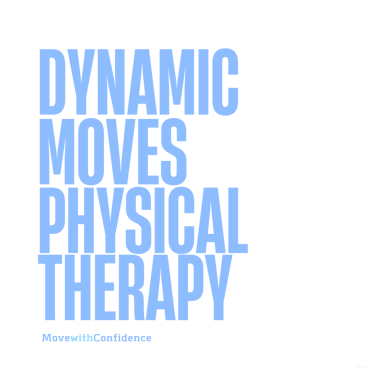Understanding the Different Types of Physical Therapy
Gain a comprehensive understanding of the different types of physical therapy available to aid in the recovery and rehabilitation process.


Physical therapy plays a vital role in helping individuals recover from injuries, manage chronic conditions, and improve overall physical well-being. There are various types of physical therapy techniques and treatments available, each targeting specific areas of the body or addressing particular conditions. Understanding the different types of physical therapy can help you make informed decisions about your healthcare and ensure you receive the most suitable treatment for your needs.
The Importance of Physical Therapy
Physical therapy is an essential component of the healthcare system, focusing on restoring and maintaining physical function, alleviating pain, and enhancing quality of life. Through personalized treatment plans, physical therapists employ a range of techniques to promote mobility, strength, flexibility, and balance. Whether you're recovering from an injury, managing a chronic condition, or seeking preventive care, physical therapy can significantly impact your well-being.
Types of Physical Therapy
1. Orthopedic Physical Therapy
Orthopedic physical therapy specializes in treating musculoskeletal injuries and conditions affecting the bones, joints, muscles, ligaments, and tendons. This type of therapy is commonly used to address fractures, sprains, strains, arthritis, and post-surgical rehabilitation. Orthopedic physical therapists employ various techniques such as manual therapy, therapeutic exercises, and modalities like ultrasound and electrical stimulation to enhance healing and restore function.
2. Neurological Physical Therapy
Neurological physical therapy focuses on individuals with neurological disorders or conditions affecting the nervous system. This includes conditions like stroke, Parkinson's disease, multiple sclerosis, spinal cord injuries, and traumatic brain injuries. Through targeted exercises, balance training, gait training, and other specialized techniques, neurological physical therapy aims to improve mobility, coordination, and overall physical function.
3. Cardiovascular and Pulmonary Physical Therapy
Cardiovascular and pulmonary physical therapy focuses on individuals with heart and lung conditions. This type of therapy helps improve cardiovascular endurance, lung capacity, and overall respiratory function. Physical therapists use exercise programs, breathing exercises, and education to enhance patients' ability to perform daily activities and optimize their cardiovascular and pulmonary health.
4. Geriatric Physical Therapy
Geriatric physical therapy caters specifically to the unique needs of older adults. As we age, physical function naturally declines, and conditions such as arthritis, osteoporosis, and joint replacements become more prevalent. Geriatric physical therapy aims to improve mobility, balance, and strength, enabling older adults to maintain independence and improve their overall quality of life.
5. Pediatric Physical Therapy
Pediatric physical therapy focuses on infants, children, and adolescents, addressing a wide range of conditions that affect their physical development and function. This includes developmental delays, cerebral palsy, spina bifida, and genetic disorders. Pediatric physical therapists employ play-based activities, exercises, and specialized interventions to promote motor skills, coordination, and overall physical development in children.
6. Sports Physical Therapy
Sports physical therapy is geared towards athletes and individuals engaged in sports activities. Physical therapists specializing in sports therapy help prevent, diagnose, and treat sports-related injuries. They develop personalized treatment plans that include exercises, manual therapy, and sport-specific training to aid in recovery, enhance performance, and prevent future injuries.
Frequently Asked Questions about Physical Therapy
Q) What conditions can physical therapy help with?
Physical therapy can assist with a wide range of conditions, including musculoskeletal injuries, neurological disorders, cardiovascular and pulmonary conditions, and pediatric developmental issues.
Q) Is physical therapy painful?
Physical therapy aims to alleviate pain and discomfort, but some therapeutic techniques may cause temporary discomfort during treatment. Your physical therapist will work closely with you to ensure your comfort and adjust the treatment as necessary.
Q) How long does a physical therapy session typically last?
The duration of a physical therapy session can vary depending on the treatment plan and individual needs. Sessions usually last between 30 minutes to one hour.
Q) Do I need a doctor's referral for physical therapy?
In many cases, you may not need a doctor's referral to seek physical therapy. However, it is always best to consult with your primary care physician or specialist to determine the most appropriate course of treatment for your specific condition.
Q) How long does physical therapy treatment typically last?
The duration of physical therapy treatment depends on various factors, such as the nature and severity of the condition, individual progress, and treatment goals. It can range from a few weeks to several months.
Q) Can physical therapy prevent surgery?
In some cases, physical therapy can help individuals avoid surgery or serve as a pre-operative preparation to optimize outcomes. Physical therapists work closely with patients to develop personalized treatment plans that may alleviate symptoms and improve function, potentially avoiding the need for surgery.
Conclusion
Understanding the different types of physical therapy is crucial for making informed decisions about your healthcare and ensuring you receive the most appropriate treatment for your needs. Whether you're recovering from an injury, managing a chronic condition, or seeking to enhance your physical well-being, physical therapy offers a range of techniques tailored to specific areas of the body and conditions. From orthopedic and neurological therapy to pediatric and geriatric care, physical therapy plays a vital role in promoting mobility, function, and overall well-being.
Remember, before starting any physical therapy treatment, it's important to consult with a healthcare professional or a qualified physical therapist who can assess your condition and develop a personalized treatment plan to meet your specific needs.
